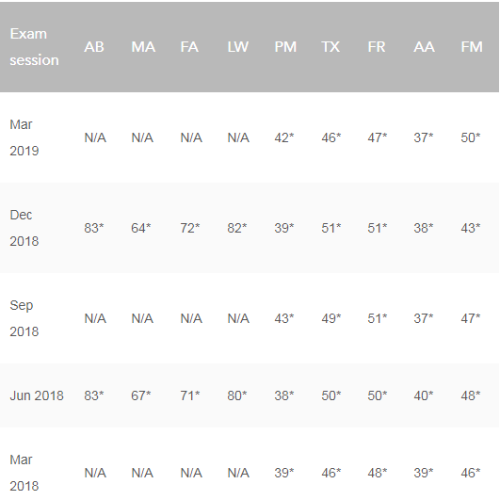ACCA考试共需要经过13门考试,其中较为有难度的一科就是《审计与认证业务》,简称为AA。AA是历年来一次通过率都极为偏低的科目,据ACCA官方统计,近两年来,其全球考试通过率平均不高于40%。

(ACCA官方通过率)
2019年9月将是ACCA新考纲实施的第一个考季,为了更快地拿下这一考试,笔者希望大家都能尽快掌握本次考季中,考纲的一些变化。具体内容如下:
Summary of changes to Audit and Assurance (AA)
ACCA periodically reviews its qualification syllabuses so that they fully meet the needs of
stakeholders such as employers, students, regulatory and advisory bodies and learning providers.
The main areas which have been added to the syllabus are summarised in the table below.
Table 1 – Amendments to AA
Section and subject area Syllabus content
B1(e) A learning outcome has been added in
respect of quality control. Candidates now
need an understanding of the objectives
and importance of quality control, as well
as being able to explain quality control
procedures.
Explain the overall objectives and
importance of quality control
procedures in concluding an audit.
C2(a) The references to internal control
questionnaires and internal control
questionnaires have been combined.
Explain how auditors record internal
control systems including the use of
narrative notes, flowcharts and
questionnaires.
C3(b) The learning outcome has been reworded
to make specific reference to key controls.
Describe control objectives, control
procedures, activities, key controls
and tests of control in relation to:
i) The sales system;
ii) The purchases system
iii) The payroll system
iv) The inventory system
v) The cash system
vi) Non-current assets
C4(c) The learning outcome which was
previously under A3(g) has been moved
to C4(c) as it is considered to be most
relevant to the issue of internal control.
Discuss the need for auditors to
communicate with those charged
with governance.
C5(b) The specific reference to appropriate
international codes of corporate
governance has been removed.
Discuss the elements of best
practice in the structure and
operations of internal audit.
D5(a) &D5(b)
These learning outcomes have been
reworded to include reference to data
analytics.
D Audit evidence
5. Computer-assisted audit
techniques
a) Explain the use of computerassisted
audit techniques and data
analytics in the context of an audit.
b) Discuss and provide relevant
examples of the use of test data and
audit software and other data
analytics tools.